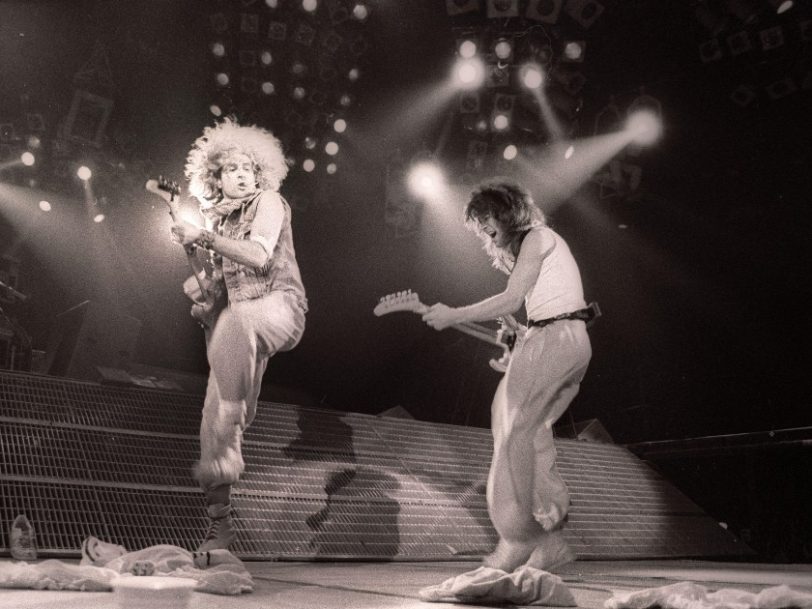First issued in 1982, Van Halen’s fifth album, Diver Down, came housed in a strange sleeve that stood out among Van Halen album covers, barely hinted at the music contained within. The cover image – actually representing the red and white “diver down” warning flag used in numerous US jurisdictions to indicate a scuba diver submerged in the area – was, however, chosen specifically for its enigmatic quality.
Listen to ‘Diver Down’ here.
“It’s not immediately apparent what is going on underneath”
“There was something going on that’s not apparent to your eyes,” singer David Lee Roth told Sounds’ Los Angeles correspondent Sylvie Simmons in June 1982. “It means, it’s not immediately apparent to your eyes what is going on underneath the surface.”
The same element of surprise applied where Diver Down’s music was concerned. A surprisingly brisk follow-up to the previous year’s painstakingly compiled Fair Warning, the album clocked in at barely half an hour, featured a variety of different styles and was the end result of a mere two weeks in the studio. With hindsight, it probably wasn’t what fans were expecting, but then Van Halen hadn’t planned on making a new album so soon. Indeed, Diver Down grew out of a one-off single project intended to keep the group in the public eye while they took some long-awaited time off.
“You got a hit single on your hands. We gotta have that record”
“When we came off the Fair Warning tour last year, we were going to take a break and spend a lot of time writing this and that,” guitarist Eddie Van Halen told Guitar Player in a 1982 interview. “Dave came up with the idea of, ‘Hey, why don’t we start off the new year with just putting out a single?’”
Van Halen’s frontman floated the idea of recording a cover, and initially pitched Martha And The Vandellas’ Motown classic Dancing In The Street. After Eddie struggled with the song’s arrangement (“I couldn’t figure out a riff… I always like to do a riff, as opposed to just hitting barre chords or something,” he later said), the band opted instead to record another favourite, Roy Orbison’s legendary 1964 hit, Oh, Pretty Woman.




